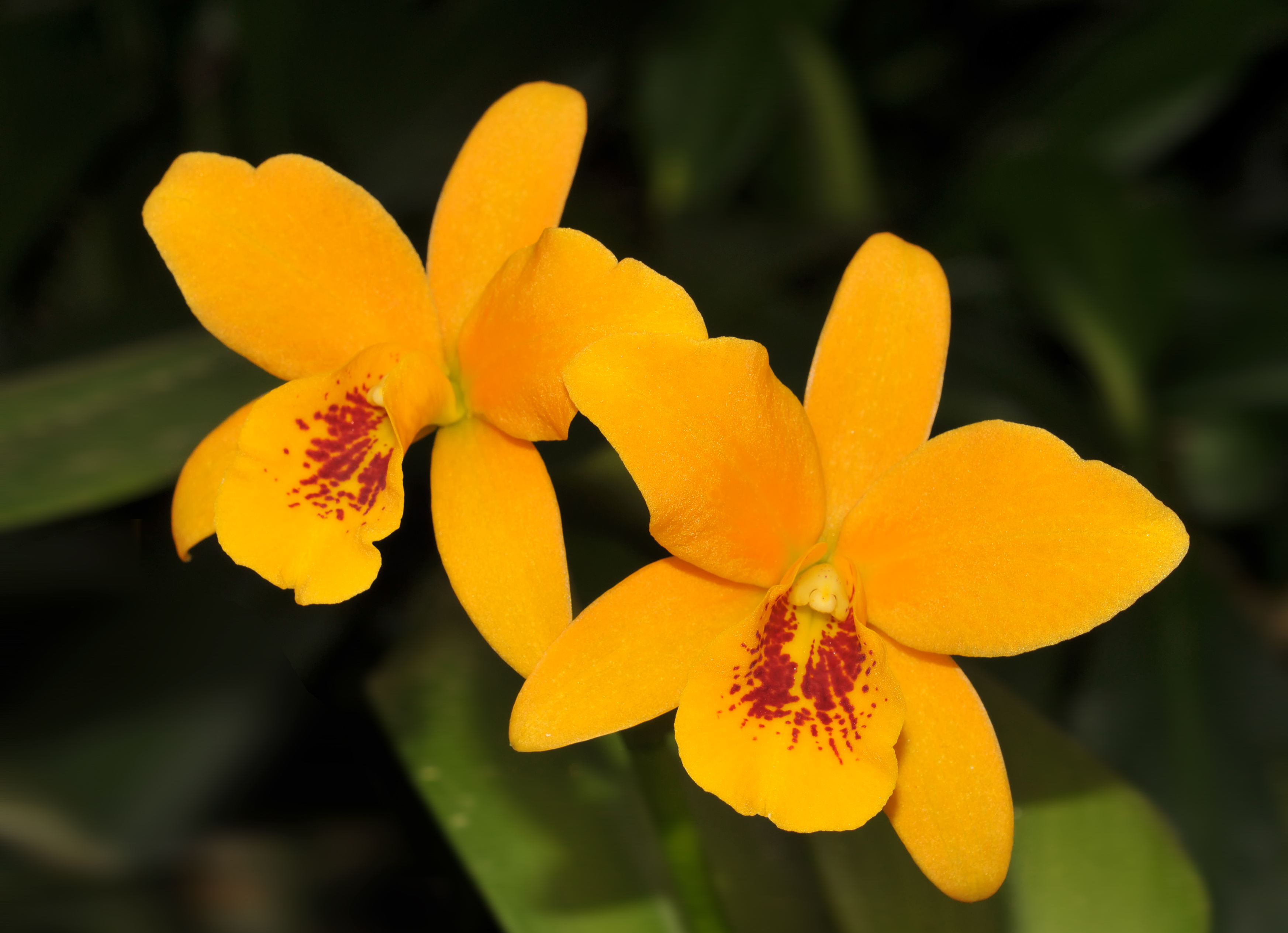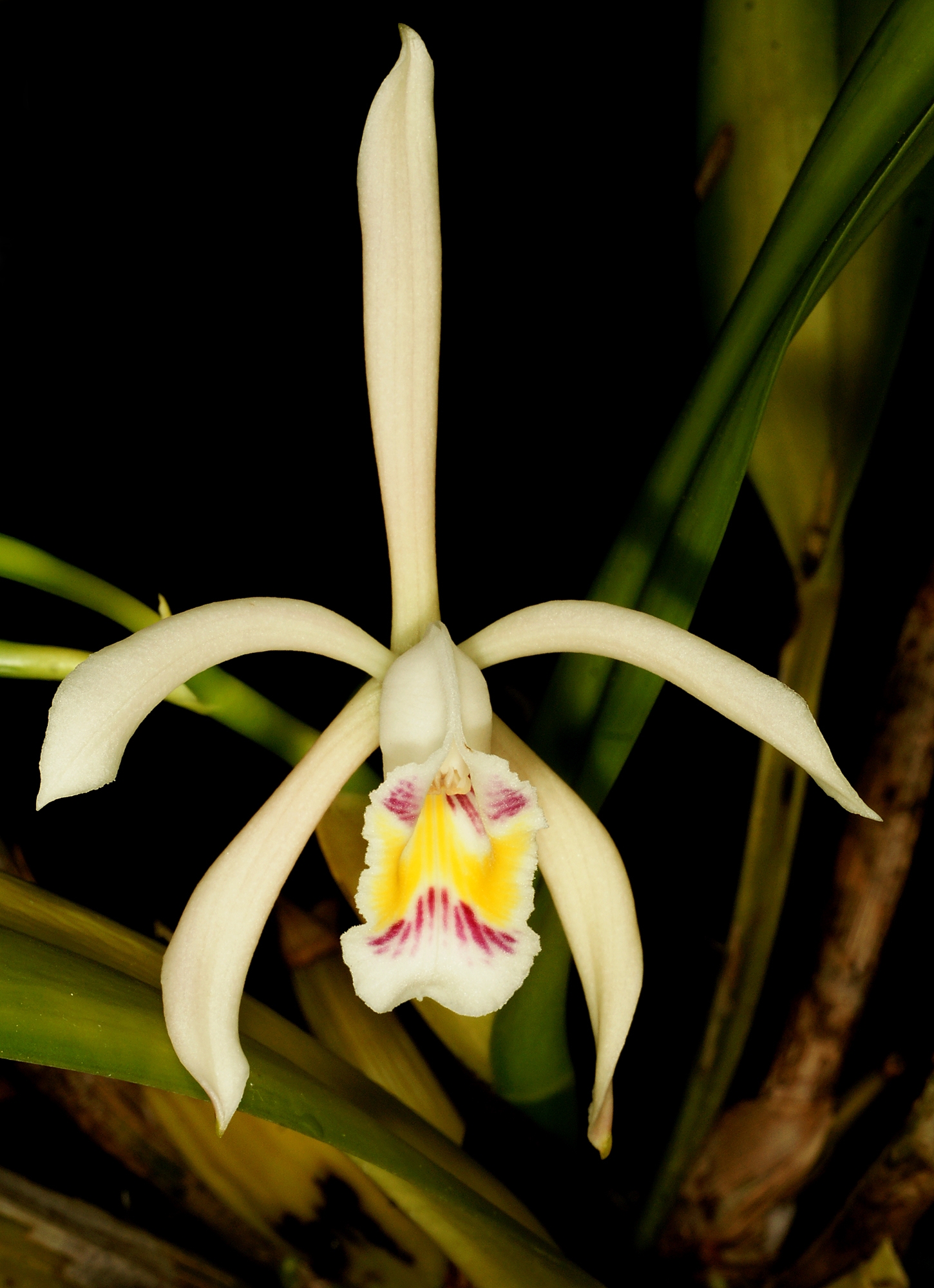|
Ă— Laeliocattleya
''Laeliocattleya'' is a nothogenus of intergeneric orchid hybrids descended from the parental genera ''Laelia'' and ''Cattleya''. It is abbreviated Lc. in the horticultural trade. Due to the recent decision by the Royal Horticultural Society (the international orchid registration authority) to recognize the reduction of the Brazilian ''Laelia'' species and the entire genus ''Sophronitis'' to synonymy under ''Cattleya'', many hybrids which had previously been described as ''Laeliocattleya'' hybrids are now classified as ''Cattleya'' hybrids. (e.g. ''C''. George Cutler) List of grexes * ''Laeliocattleya'' (syn. ''Cattleya'') Anna Ingham – Has flowers that range from dark reddish purple to deep mauve. The lip is darker colored and the lip is veined with gold. They can bear up to five flowers, each 6 to 7 inches wide. * ''Laeliocattleya'' (syn. ''Cattleya'') Derna – Has flowers that are yellow. The lip is purple and is streaked with gold. The can bear up to six flowers, ... [...More Info...] [...Related Items...] OR: [Wikipedia] [Google] [Baidu] |
Robert Allen Rolfe
Robert Allen Rolfe (1855, Wilford, Nottinghamshire – 1921, Richmond, Surrey) was an English botanist specialising in the study of orchids. For a time he worked in the gardens at Welbeck Abbey. He entered Kew in 1879 and became second assistant. He was the first curator of the orchid herbarium at the Royal Botanic Gardens, Kew, founded the magazine ''The Orchid Review'', and published many papers on hybrids of different species of orchids. The genus ''Allenrolfea'' of amaranths was named after him by Carl Ernst Otto Kuntze. Rolfe was buried in Richmond Cemetery Richmond Cemetery is a cemetery on Lower Grove Road in Richmond in the London Borough of Richmond upon Thames, England. The cemetery opened in 1786 on a plot of land granted by an Act of Parliament the previous year. The cemetery has been expande .... Works Rolfe, Robert Allen (1883). "On the Selagineæ described by Linnæus, Bergius, Linnæus, fil., and Thunberg." Botanical Journal of the Linnean Society 20(129): 33 ... [...More Info...] [...Related Items...] OR: [Wikipedia] [Google] [Baidu] |
Nothogenus
In botanical nomenclature, a Hybrid (biology), hybrid may be given a hybrid name, which is a special kind of botanical name, but there is no requirement that a hybrid name should be created for plants that are believed to be of hybrid origin. The ''International Code of Nomenclature for algae, fungi, and plants'' (ICNafp) provides the following options in dealing with a hybrid: * A hybrid may get a name; this will usually be the option of choice for naturally occurring hybrids. * A hybrid may also be indicated by a formula listing the parents. Such a formula uses the multiplication sign "×" to link the parents. ** "It is usually preferable to place the names or epithets in a formula in alphabetical order. The direction of a cross may be indicated by including the sexual symbols (♀: female; ♂: male) in the formula, or by placing the female parent first. If a non-alphabetical sequence is used, its basis should be clearly indicated." (H.2A.1) * Grex (horticulture), Grex names can b ... [...More Info...] [...Related Items...] OR: [Wikipedia] [Google] [Baidu] |
Orchid
Orchids are plants that belong to the family Orchidaceae (), a diverse and widespread group of flowering plants with blooms that are often colourful and fragrant. Along with the Asteraceae, they are one of the two largest families of flowering plants. The Orchidaceae have about 28,000 currently accepted species, distributed in about 763 genera. (See ''External links'' below). The determination of which family is larger is still under debate, because verified data on the members of such enormous families are continually in flux. Regardless, the number of orchid species is nearly equal to the number of bony fishes, more than twice the number of bird species, and about four times the number of mammal species. The family encompasses about 6–11% of all species of seed plants. The largest genera are ''Bulbophyllum'' (2,000 species), ''Epidendrum'' (1,500 species), ''Dendrobium'' (1,400 species) and ''Pleurothallis'' (1,000 species). It also includes ''Vanilla'' (the genus of the ... [...More Info...] [...Related Items...] OR: [Wikipedia] [Google] [Baidu] |
Hybrid (biology)
In biology, a hybrid is the offspring resulting from combining the qualities of two organisms of different breeds, varieties, species or genera through sexual reproduction. Hybrids are not always intermediates between their parents (such as in blending inheritance), but can show hybrid vigor, sometimes growing larger or taller than either parent. The concept of a hybrid is interpreted differently in animal and plant breeding, where there is interest in the individual parentage. In genetics, attention is focused on the numbers of chromosomes. In taxonomy, a key question is how closely related the parent species are. Species are reproductively isolated by strong barriers to hybridisation, which include genetic and morphological differences, differing times of fertility, mating behaviors and cues, and physiological rejection of sperm cells or the developing embryo. Some act before fertilization and others after it. Similar barriers exist in plants, with differences in flowering tim ... [...More Info...] [...Related Items...] OR: [Wikipedia] [Google] [Baidu] |
Laelia
''Laelia'' is a small genus of 25 species in the orchid family (Orchidaceae). ''Laelia'' species are found in areas of subtropical or temperate climate in Central and South America, but mostly in Mexico. ''Laelia'' is abbreviated ''L.'' in the horticultural trade. Description Mostly epiphyte herbs (with a few lithophytes) with laterally compressed pseudobulbs. One to four leathery or fleshy leaves are born near the top of each pseudobulb, and can be broadly ovate to oblong. The inflorescence is a terminal raceme (rarely a panicle). The flowers have 8 pollinia; petals are of a thinner texture than the sepals; sepals and petals are of similar shape, but the sepals being narrower; the lip or labellum is free from the arched flower column. Distribution Species of ''Laelia'' can be found from western Mexico south to Bolivia, from sea level to mountain forests. Taxonomy The genus ''Laelia'' was described as part of subfamily Epidendroideae by John Lindley. Brazilian ''Laelias'', af ... [...More Info...] [...Related Items...] OR: [Wikipedia] [Google] [Baidu] |
Cattleya
''Cattleya'' () is a genus of orchids from Costa Rica south to Argentina. The genus is abbreviated C in trade journals. Description Epiphytic or terrestrial orchids with cylindrical rhizome from which the fleshy noodle-like roots grow. Pseudobulbs can be conical, spindle-shaped or cylindrical; with upright growth; one or two leaves growing from the top of them. The leaves can be oblong, lanceolate or elliptical, somewhat fleshy, with smooth margin. The inflorescence is a terminal raceme with few or several flowers. Flowers have sepals and petals free from each other; the lip or labellum (lowermost petal), usually has a different coloration and shape from the rest of the flower and covers in part the flower column forming a tube. There are four polliniums (bag-like organs that contain pollen). The fruit is a capsule with many small seeds.Schweinfurth, C., "Orchidaceae, Orchids of Peru", ''Fieldiana, Botany'' 30(3): 535 Taxonomy The genus was named in 1824 by John Lindley af ... [...More Info...] [...Related Items...] OR: [Wikipedia] [Google] [Baidu] |
Royal Horticultural Society
The Royal Horticultural Society (RHS), founded in 1804 as the Horticultural Society of London, is the UK's leading gardening charity. The RHS promotes horticulture through its five gardens at Wisley (Surrey), Hyde Hall (Essex), Harlow Carr (North Yorkshire), Rosemoor (Devon) and Bridgewater (Greater Manchester); flower shows including the Chelsea Flower Show, Hampton Court Palace Flower Show, Tatton Park Flower Show and Cardiff Flower Show; community gardening schemes; Britain in Bloom and a vast educational programme. It also supports training for professional and amateur gardeners. the president was Keith Weed and the director general was Sue Biggs CBE. History Founders The creation of a British horticultural society was suggested by John Wedgwood (son of Josiah Wedgwood) in 1800. His aims were fairly modest: he wanted to hold regular meetings, allowing the society's members the opportunity to present papers on their horticultural activities and discoveries, to enc ... [...More Info...] [...Related Items...] OR: [Wikipedia] [Google] [Baidu] |
Sophronitis
''Cattleya'' () is a genus of orchids from Costa Rica south to Argentina. The genus is abbreviated C in trade journals. Description Epiphyte, Epiphytic or terrestrial orchids with cylindrical rhizome from which the fleshy noodle-like roots grow. Pseudobulbs can be conical, spindle-shaped or cylindrical; with upright growth; one or two leaves growing from the top of them. The leaves can be oblong, lanceolate or elliptical, somewhat fleshy, with smooth margin. The inflorescence is a terminal raceme with few or several flowers. Flowers have sepals and petals free from each other; the Labellum (botany), lip or labellum (lowermost petal), usually has a different coloration and shape from the rest of the flower and covers in part the Column (botany), flower column forming a tube. There are four polliniums (bag-like organs that contain pollen). The fruit is a capsule with many small seeds.Schweinfurth, C., "Orchidaceae, Orchids of Peru", ''Fieldiana, Botany'' 30(3): 535 Taxonomy Th ... [...More Info...] [...Related Items...] OR: [Wikipedia] [Google] [Baidu] |
Orchid Nothogenera
Orchids are plants that belong to the family Orchidaceae (), a diverse and widespread group of flowering plants with blooms that are often colourful and fragrant. Along with the Asteraceae, they are one of the two largest families of flowering plants. The Orchidaceae have about 28,000 currently accepted species, distributed in about 763 genera. (See ''External links'' below). The determination of which family is larger is still under debate, because verified data on the members of such enormous families are continually in flux. Regardless, the number of orchid species is nearly equal to the number of bony fishes, more than twice the number of bird species, and about four times the number of mammal species. The family encompasses about 6–11% of all species of seed plants. The largest genera are ''Bulbophyllum'' (2,000 species), ''Epidendrum'' (1,500 species), ''Dendrobium'' (1,400 species) and ''Pleurothallis'' (1,000 species). It also includes ''Vanilla'' (the genus of the ... [...More Info...] [...Related Items...] OR: [Wikipedia] [Google] [Baidu] |






